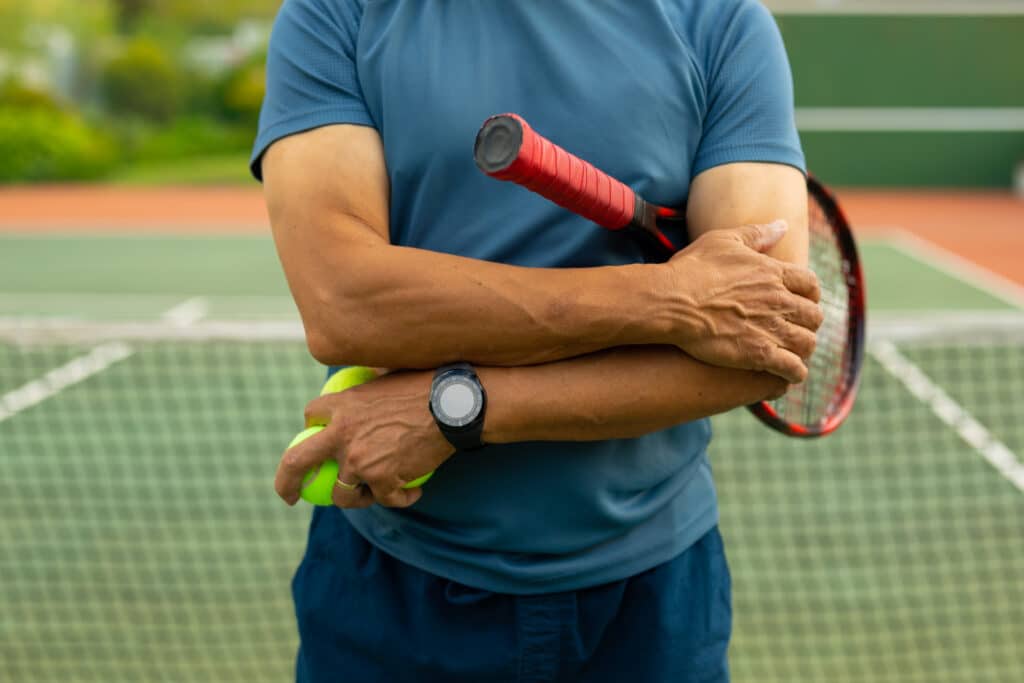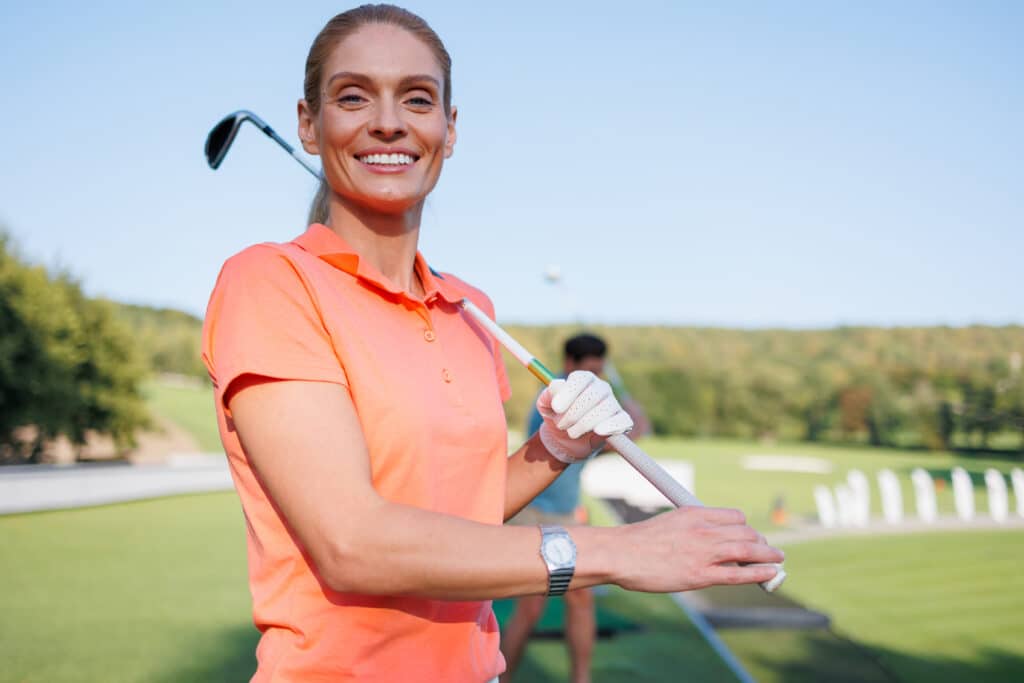Elbow pain can be a frustrating and persistent issue impacting your day-to-day and it is often caused by repetitive strain or overuse of the muscles and tendons around your elbow joint. Two common conditions affecting the elbow are tennis elbow and golfer’s elbow, both of which are forms of elbow tendinitis that impact different areas of the elbow.
Simply put, elbow tendinitis is pain in your elbow caused by inflammation or irritation of the tendons in the elbow. It typically occurs due to repetitive movements or overuse, leading to small tears in the tendon fibers. Although the common names for this condition are sports-related, this condition can cause pain, stiffness, and weakness in the elbow, forearm, and wrist even if you don't play tennis or golf!
Medically known as lateral epicondylitis, tennis elbow is a condition that can develop due to the repeated overuse of your forearm muscles and tendons. These muscles help to extend and lift the wrist, and when overworked, the tendons that attach them to the outer part of the elbow become irritated and inflamed.

Despite the name, tennis elbow is not exclusive to tennis players. It frequently affects individuals engaged in repetitive hand, wrist, and arm movements, making it a common issue for plumbers, painters, carpenters, cooks, and butchers. In some cases, the cause of tennis elbow remains unknown, as it can develop gradually without a clear trigger.
Despite the name, tennis elbow is not exclusive to tennis players. It frequently affects individuals engaged in repetitive hand, wrist, and arm movements, making it a common issue for plumbers, painters, carpenters, cooks, and butchers. In some cases, the cause of tennis elbow remains unknown, as it can develop gradually without a clear trigger.
Tennis elbow will typically present with pain and tenderness on the outer part of your elbow, where your forearm tendons attach to the bone. This discomfort can radiate down the forearm and into the wrist, making certain activities challenging. Common signs include:
If resting, applying ice, and using over-the-counter pain medications do not alleviate the pain, it may be time to consult a healthcare provider. Persistent discomfort can interfere with daily life and may require professional treatment to prevent further damage and ensure proper healing.
The most common cause of tennis elbow is typically repeat motion and muscle strain. Activities that involve continuous gripping, lifting, or twisting can lead to small tears in your tendons, causing pain and inflammation. Some of the most common triggers include:
Golfer’s elbow, or medial epicondylitis, is another form of elbow tendinitis, but oppposite of tennis elbow, it affects the inner part of the elbow rather than the outer. This condition is caused by repetitive flexing, gripping, or swinging motions that put strain on the tendons that connect your forearm muscles to the bony bump on the inside of your elbow.

Much like tennis elbow, golfer’s elbow is not limited to golfers. It commonly affects baseball players, weightlifters, bowlers, and individuals performing repetitive manual labor such as construction work or carpentry.
Golfer’s elbow shares similarities with tennis elbow but impacts a different area.
Common symptoms of golfer's elbow include:
If rest and self-care treatments do not ease the symptoms of golfer’s elbow, seeking medical advice is essential. Left untreated, the condition has potential to worsen which can lead to chronic pain and decreased grip strength.
Golfer’s elbow occurs due to repetitive movements that put stress on the flexor muscles of the forearm. Some common causes include:
OrthoNJ is different from your typical medical provider. Unlike many in the industry, we prioritize patient care over profits. Our six divisions work collaboratively to ensure the best outcomes for our patients. We believe in the "Power to Put Patients First," our doctors and divisional partners strive to uphold this commitment to our patients in every aspect of our medical care.
While these conditions are distinctly different there are several factors that can increase the likelihood of developing either tennis or golfer’s elbow:
Fortunately, both tennis elbow and golfer’s elbow can often be treated with conservative methods, including:
Sometimes more severe cases do not respond to conservative treatments and medical interventions such as corticosteroid injections or surgery may be necessary.
You don't have to stay in pain. Contact one of our ONJ divisions to schedule an appointment.

Although not always avoidable, you can take steps to minimize the risk of developing these conditions:
Both tennis elbow and golfer’s elbow can be painful and frustrating conditions, but with early intervention and proper care, most people recover fully and resume their normal activities. Whether the pain is on the inner or outer elbow, recognizing the symptoms ea so you can make necessary adjustments that can make a significant difference in treatment outcomes.
If your elbow pain is persistent and affects daily life, you should consult one of OrthoNJ's orthopedic specialists who can help determine the best course of action for your recovery.